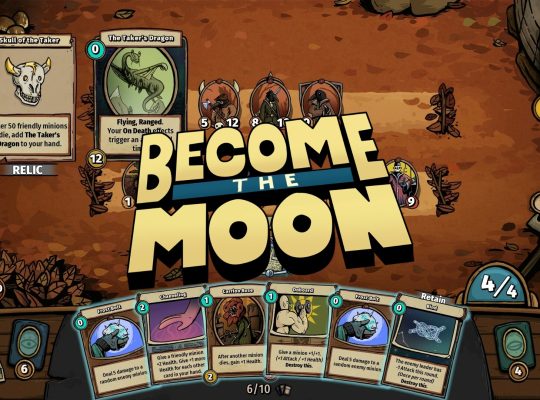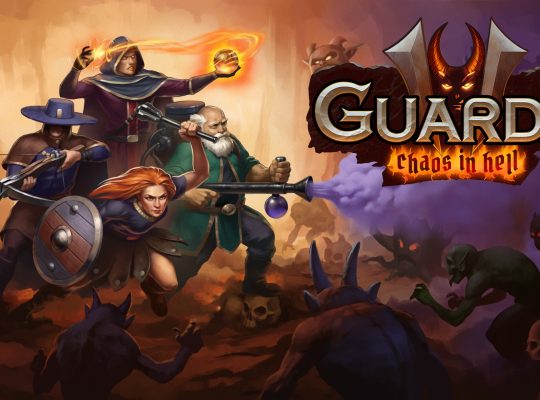Whispers of the Eyeless emerges from the shadows with an interesting premise: you control a secret cult in a dark fantasy world, using dangerous magic to bring old gods back to life. The game comes from Evil Gingerbread Studio, run by Venris (who became known for the Total War: Warhammer SFO: Grimhammer mod). It mixes different gameplay styles: turn-based combat, running your cult, and roguelike elements. Additionally, developers took inspiration from games like Darkest Dungeon, Loop Hero, and Children of Morta, as well as Polish folk stories.
It launched in Early Access after a very successful Kickstarter campaign (over 500% funded). However, right now, Whispers of the Eyeless has a strong foundation full of great atmosphere and potential but since it’s still unfinished, some parts feel rough or unclear. Personally, I really liked my first time playing it back in September last year, but I can see why it might not click for everyone. That said, I’m having fun with what’s there so far.
Trinity of Loops in Progress
Whispers of the Eyeless offers three main gameplay pillars: dungeon crawling, exploration, and cult management with a roguelite mode called Fate’s Mirror, as its Early Access centerpiece. You play as the First Prophet, infiltrating Aranthor’s districts to gather resources, recruit followers, and battle foes, all while nurturing your hidden sanctum.
The main gameplay loop involves exploring districts or dungeons and fighting enemies in turn-based battles. You’ll face corrupted guards and strange monsters. Your prophet can use blessings (power-ups from dead gods) and equipment. You’ll also need to manage health, sanity, and fervor (which works like morale for cultists). Combat is tactical but easy to understand: choose attacks, abilities, or blessings placed inside a dice, then watch the fight play out automatically.
Early battles are simple, like using an axe to cause bleeding or boosting damage with Wrath’s fury. Later fights require better teamwork between skills and passives. An auto-battle feature helps speed up repetitive fights, which is useful because the normal combat animations can be slow. The game is clearly inspired by Darkest Dungeon, especially with its sanity system, if your prophet loses too much sanity, they start to struggle.
However, the combat doesn’t feel as impactful. Unfortunately, luck plays too big of a role. Random blessings and enemy critical hits can suddenly turn battles in unexpected ways, making strategy feel less important than your lucky chances. The demo I played promised “hundreds of skills,” but even in the full version, the selection is still small even in Early Access. Some abilities are much stronger than others, so balancing is an issue. Updates in March added new enemies and modifiers, which helps with variety, but the game isn’t yet the “deep strategy experience” it claims to be.

Cult Management and Conquest in Aranthor
Between battles, you explore Aranthor’s districts using a point-and-click map. You choose paths that lead to different events, some give loot, others start fights, or let you recruit new followers. Your choices shape your cult’s future: side with Wrath for violence or Desire for trickery. This “Choose Your Own Adventure” style adds fun storytelling, but events start to feel repetitive over time. Right now, the Early Access districts look and play too similarly, with not enough variety in events. Still, the different paths show promise for more depth as the game grows.
Back at your sanctum, you take charge of your cult’s operations, managing resources like gold, influence, and materials while overseeing your followers. This is where you build altars, upgrade facilities, and perform dark rituals to appease the Dead Gods. The system stands out as the game’s most unique feature, requiring you to carefully balance your cult’s fervor to prevent betrayal, assign disciples to missions like sabotage or intelligence gathering, and decide which deity to favor for blessings.
The sanctum develops gradually, introducing new mechanics over time to help ease you into its complexity. However, the initial experience can feel overwhelming; the UI floods you with menus, and key mechanics like ritual costs or disciple traits aren’t always clearly explained, forcing you to learn through trial and error. Yet once everything clicks, managing your shadowy empire becomes deeply satisfying. It captures the intrigue of Cultist Simulator but with a darker, more hands-on approach to cult leadership.

Solid Foundation Needing Darker Depths
Additionally, items like the Rusted Axe, Crimson Robe or Madman’s Pendant tweak stats like health, damage, sanity resistance, or grant passives. Gear is tiered (common to rare), with higher tiers requiring sanctum upgrades. You can’t overhaul your prophet mid-run in Fate’s Mirror, but sanctum persistence lets you grind for better setups across attempts. It’s not Diablo-level loot depth, variety is limited, and RNG loot drops frustrate, but it adds customization.
The Early Access version mainly focuses on Fate’s Mirror, a roguelite mode where each playthrough is randomly generated. You can unlock special modifiers (called shards) that change gameplay, like stronger attacks or risky health penalties. While designed for replayability with different strategies to try, it currently feels limited. Runs only last a few hours, and there’s not enough content yet to keep you engaged long-term.
Right now, this mode works more as a mechanic test than a complete game experience. The full story campaign won’t arrive until the official 1.0 release and the core gameplay shows promise but needs work. Battles require more refinement and variety as exploration feels shallow, and managing your cult alternates between being interesting and frustrating. There’s a good foundation here, but the execution isn’t quite there yet.

Gothic Comic Come to Life
This year has brought us many great-looking games, and Whispers of the Eyeless is one of them. The game uses beautiful 2D hand-drawn art similar to Darkest Dungeon’s sketchy style, you’ll see rough ink lines, dark colors, and creepy monster designs, all with a comic book feel. The different areas of Aranthor show strong visual contrast, from dirty back alleys to mysterious cult hideouts. Enemies look truly frightening too, whether it’s massive fanatics or ghostly spirits. While the animations are simple, they work well, you’ll see satisfying blood sprays and glowing holy powers during fights.
The best visuals might be your cult’s altars, each representing a different Dead God. They’re full of character: Wrath’s altar looks like a sharp, dangerous throne, while Desire’s has smooth, tempting shapes. The music is minimal but powerful – deep hums, sorrowful violins, and ghostly chanting that build tension perfectly. Combat sounds like clashing swords and muttered spells come through sharp and clear. The game absolutely delivers its dark fantasy atmosphere. Every scene looks like a carefully painted piece of gothic art.
In the end, Whispers of the Eyeless shows great potential but isn’t quite finished yet. It combines Darkest Dungeon’s tense combat with deep cult management in a beautifully dark world. While the style and concept are fantastic, the Early Access version still needs work. If you love challenging strategy games and don’t mind waiting for improvements, it’s worth trying now. More casual players should probably wait for the full release in 2026. The developers have created something unique here, and with more time and polish, this could become a truly outstanding game. It’s definitely one to watch.
| Pros | Cons |
|---|---|
| Beautiful graphics in comic form. | The combat still needs to be refined. |
| Cult management. | It takes time to understand the mechanics. |
| Good roguelite mode. | Too little new content. |
| Atmospheric world. | The story gets lost very quickly. |
Review copy provided by the publisher
3.5









